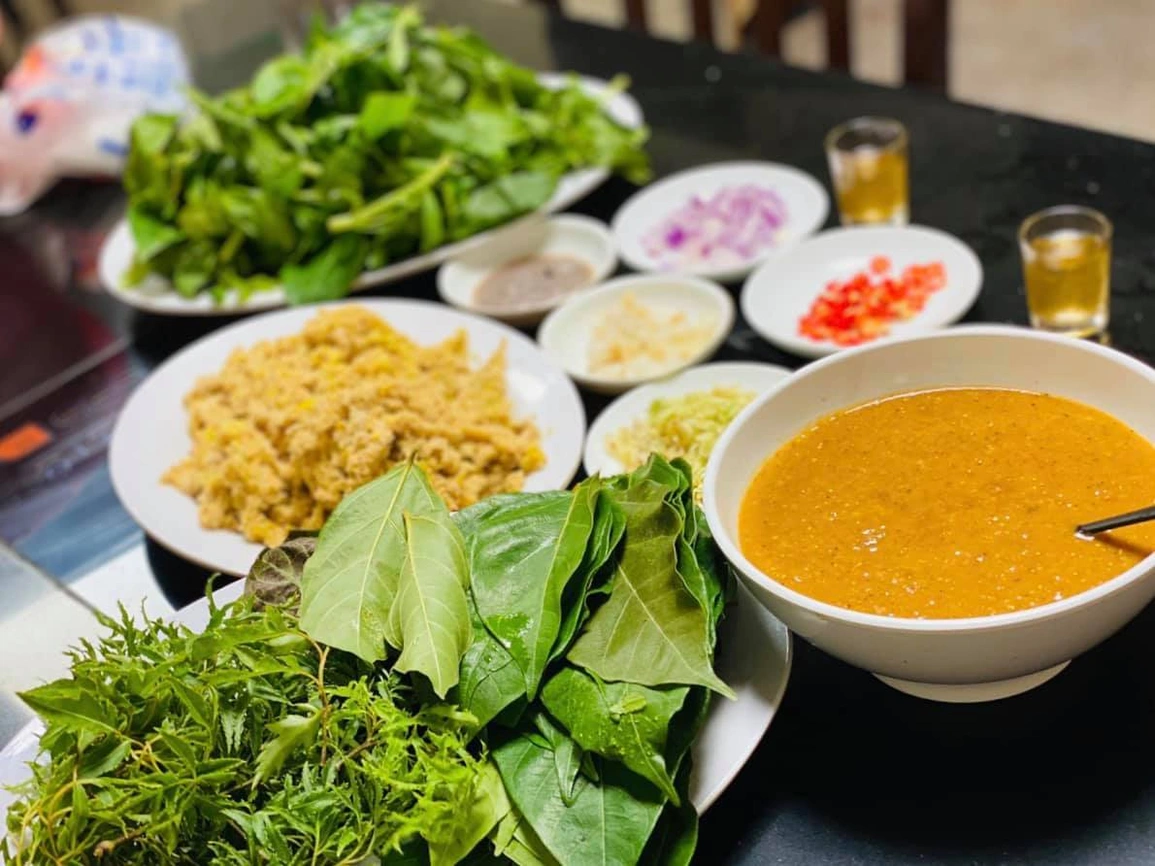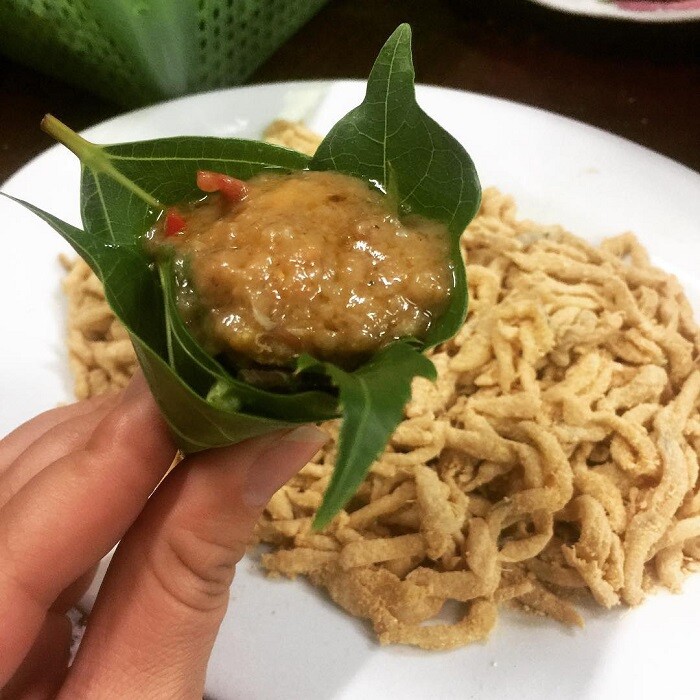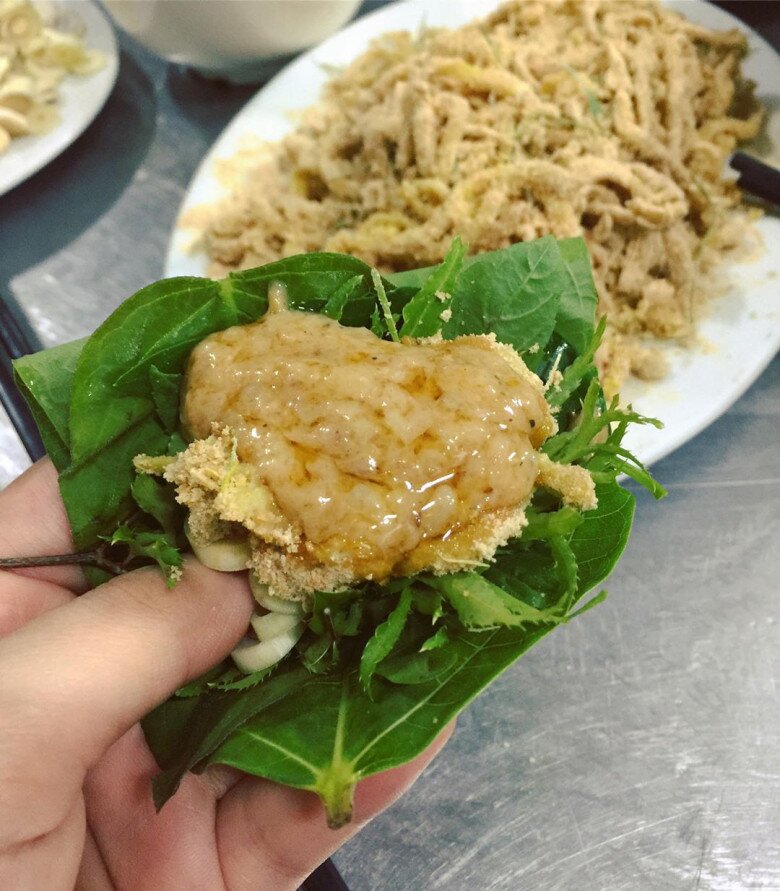What is the Eel-like Fish?
The eel (scientific name: Anguilla marmorata) belongs to the catfish group, characterized by a long, cylindrical, and scaleless body covered in a layer of characteristic slime. Its head is small and compact compared to its overall body, while its fins are strong and agile, allowing for flexible and swift movement in its habitat.

This fish primarily inhabits brackish waters, river mouths, and shallow marine areas, where they often lie in wait for prey buried in mud or sand. Their diet includes a variety of small animals such as shrimp, crab, and worms. The eel’s adaptability to diverse environments has resulted in a resilient species with distinctively flavored meat.
The nutritional value of eels is undeniable. The fish is rich in protein and contains various essential vitamins and minerals, offering significant health benefits. However, a significant challenge in preparing eels is their strong, pungent odor and bony structure with many fine bones. Thus, meticulous and careful preprocessing is required to neutralize the odor and remove the bones, retaining only the purest meat.

Notably, eels are still primarily wild-caught rather than farmed, making them a scarce resource. Additionally, past exports to markets in China, Hong Kong, and Taiwan for health-related purposes have further limited domestic supply, increasing their value and rarity in Vietnamese cuisine.
Nga Son Eel Salad: The Culinary Pride of Thanh Hoa
When it comes to Thanh Hoa, nem chua (fermented pork) and cha tom (shrimp cake) are often the first specialties that come to mind. However, there is another dish that has put this region on the culinary map: Nga Son eel salad. Originating from Nga Son, this dish has evolved from a humble local delicacy to a renowned specialty, becoming a symbol of pride for the cuisine of Thanh Hoa.
The main ingredient of this signature salad is, of course, the eel. Only the healthiest, liveliest eels are chosen, as fresh ingredients are key to the dish’s authentic flavor. While eels can survive in saltwater, freshwater, and brackish environments, they are most commonly found in coastal marshes and river mouths. Their elongated bodies, slimy skin, and agile movements make them challenging to catch, requiring the skill and experience of seasoned fishermen.

Transforming these lively eels into the famous salad involves an intricate and meticulous process. After being caught, the eels are first cleaned with wood ash or diluted lime water to remove their characteristic slime and neutralize any unpleasant odors. Next, the chef uses a warm cloth to remove the slippery skin before eviscerating and beheading the eel.
The meat extraction process is the key to the dish’s quality. This step must be performed swiftly yet skillfully to separate the pure meat from the bones without damaging it. The extracted meat is then sliced diagonally into thin, bite-sized pieces, creating an aesthetically pleasing salad.
Traditionally, the eel meat was marinated with fresh lime juice and then mixed with roasted sticky rice powder. However, to cater to modern tastes, chefs now often only mix the meat with finely grated ginger and thinly sliced lemongrass to preserve the natural freshness of the fish. The roasted sticky rice powder is usually served separately, allowing diners to add it according to their preference. This adjustment maintains the sweet and refreshing taste of the eel while enhancing the spicy and fragrant notes from the ginger and lemongrass.

The highlight of the Nga Son eel salad is undoubtedly the dipping sauce, or “cheo” as it is locally known. Cheo is more than just a condiment; it is the soul of the dish, elevating it to perfection. Cheo is made from the bones of the eel, which are pounded in a mortar and pestle and then mixed with pork belly, fermented rice, egg, and a secret blend of spices. This mixture is then slowly cooked over low heat until it becomes a thick, reddish-brown sauce with an irresistible aroma.
The cheo’s robust and creamy texture, combined with its subtle sourness, perfectly complements the sweetness of the eel, creating an unforgettable flavor profile.
The Proper Way to Enjoy Nga Son Eel Salad
The Nga Son eel salad has a unique and intriguing way of being served and eaten, setting it apart from many other dishes. To fully appreciate its flavors, diners need to prepare a variety of accompanying herbs and leaves. Common choices include sung (a type of leaf), cúc tần, lá mơ, Vietnamese coriander, basil, perilla, rau ngổ, mint, and dill. This diverse selection of herbs not only enhances the flavor but also provides dietary fiber and balances the taste.
The traditional way to eat this salad is to use a sung leaf and other aromatic leaves to create a funnel shape. A generous amount of eel salad is then placed inside, and the cheo is poured on top. Fresh chili, onion, ginger, and lemongrass slices are added, and some diners also like to include shrimp paste for an extra savory kick. Finally, the entire large roll is eaten in one go.

As the roll is bitten into, a burst of flavors and textures explodes in the mouth. First, there’s the crisp and slightly astringent taste of the sung leaf and herbs. This is followed by the creamy cheo, the sweet and nutty flavor of the fresh eel, and finally, the warm and spicy notes of ginger, lemongrass, and chili take over, creating a sensory overload. It is this intricate interplay of sweet, refreshing, fatty, nutty, and unique flavors that makes the Nga Son eel salad so addictive and satisfying.
Initially, the eel salad was a simple local dish confined to the Nga Son district in Thanh Hoa. However, its distinct flavor and refined preparation quickly spread its fame. Today, this delicacy can be found in restaurants and eateries across Thanh Hoa and even in major cities like Hanoi and Ho Chi Minh City. The Nga Son eel salad has truly become an iconic dish of Thanh Hoa, enriching Vietnamese cuisine and attracting food enthusiasts from near and far.
The Ultimate Guide to Cleaning Eel Muck: Removing the Slime, the Eel-y Way
“Eels are a delicacy, prized for their natural sweetness, tender fatty flesh, and high nutritional value. They can be a slippery customer, quite literally, and if not prepared correctly, their slime and strong fishy taste can be off-putting. With the right preparation techniques, eels can be transformed into a delicious and nutritious meal.”
4 Popular Seafood Varieties That May Harbor Parasites: A Warning for Seafood Lovers
“Seafood is a beloved delicacy for many, but it can also be a potential health hazard. Certain seafood varieties may harbor harmful parasites that can cause serious illnesses. This introduction aims to highlight the importance of being vigilant when preparing and consuming these four popular seafood choices.”
Unclogging Drains with Kitchen Staples
Introducing the world of food beyond mere sustenance; a realm where culinary delights intersect with unexpected solutions. Today, join us as we explore the uncharted territory of using familiar household ingredients like baking soda, vinegar, and even fish sauce and eel to unclog drains. It’s time to unleash your inner DIY warrior and tackle that pesky blocked pipe with a twist of culinary creativity!






































